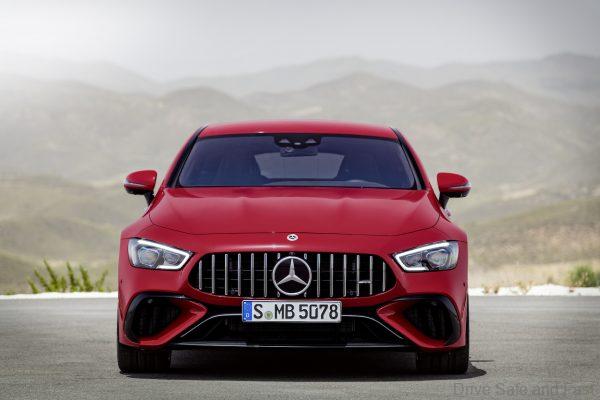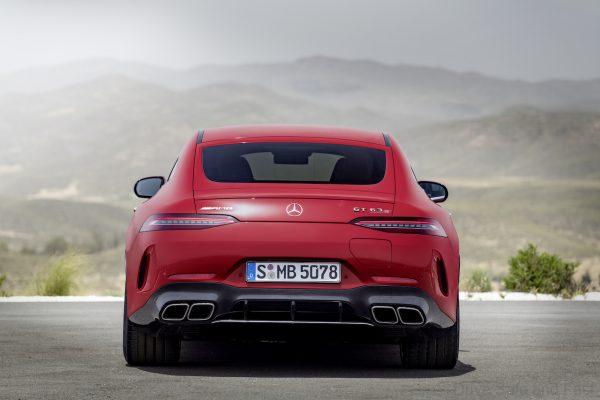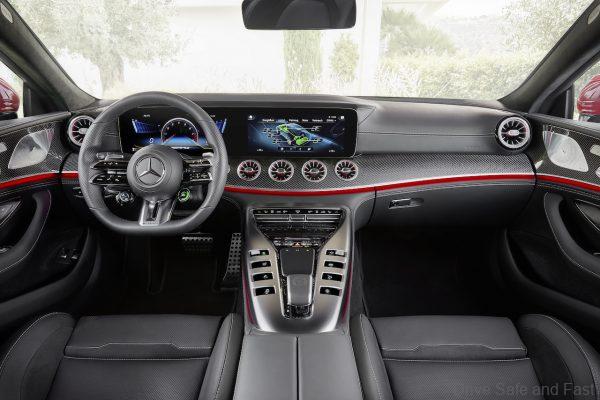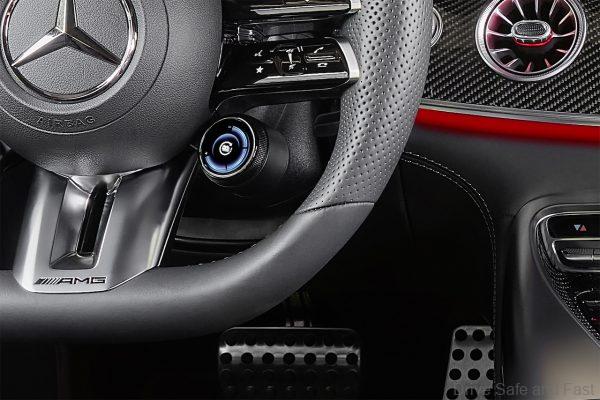We all knew this was coming – the first hybrid from Mercedes-AMG is here.
Electrification is inevitable, even more, performance cars and performance brands. Earlier this year, it was strongly rumoured that BMW M would be unveiling their first-ever hybrid performance car, the BMW X8 M. Instead, BMW M decided to go full electric instead first with the reveal of the BMW i4 M50. Mercedes-AMG on the other hand are doing a hybrid first in the form of the AMG GT 63 S E Performance. This is based on the Mercedes-AMG GT 4-door coupé body.
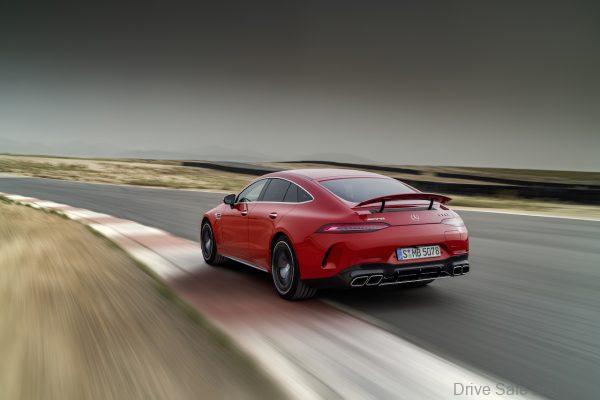
AMG GT 63 S E Performance Powertrain
Just like the other AMG GT cars, this GT 63 S E Performance still gets a 4-litre biturbo V8. However, in this model, they’ve also an electric motor on the rear axle. The electric motor is integrated into a 2-speed gearbox and an electronically-controlled limited-slip rear differential. As the electric motor has a maximum rpm of 13,500, the 2nd gear actuates at around 140km/h at the latest to make sure power and torque are consistent at all speeds.
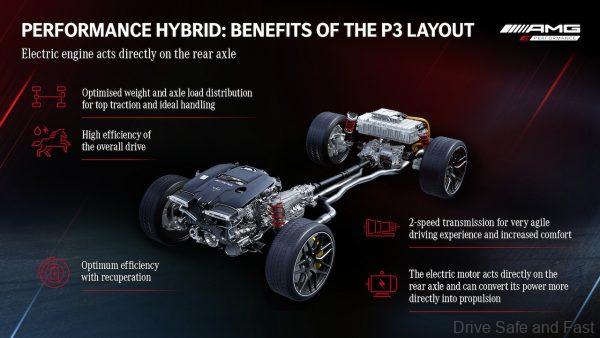
AMG says the reason why they design it in this way is to minimise energy losses from the motor and evening out the weight distribution. They also claim that this Hybrid model is more agile than the petrol model because of the electronically controlled LSD.
What’s more, because 4MATIC+ is still present on this vehicle, the electric motor can actually transfer drive power to the front axle should there be slip at the rear axle.
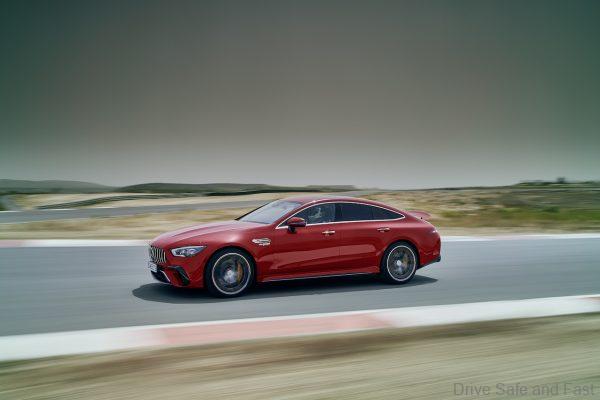
Overall system output is an amazing 843hp and 1400Nm of torque! This allows the car to complete the century sprint in just 2.9 seconds and hit 200km/h in just ten seconds. It also has a top speed of 316km/h. However, the main point of a hybrid performance car is to reduce emissions and fuel consumption. This model has a combined fuel consumption of 8.6L/100km and CO2 emissions at 196g/km. Compare that to its petrol counterpart, which gets 12.5L/100km and 286g/km and it’s easy to see that the engineers got the results they wanted.
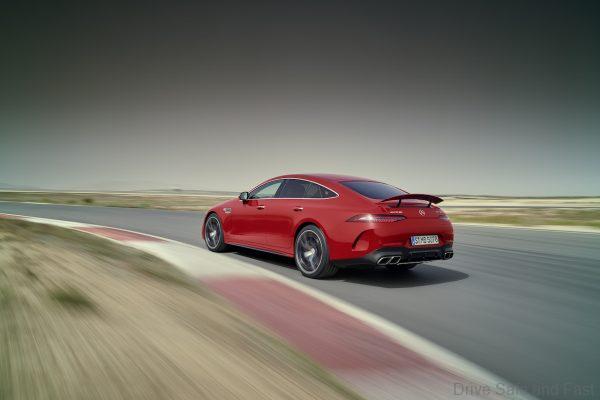
Mercedes-AMG GT 63 S E Performance Battery
The battery unit was derived from the Formula 1 experience accumulated by Mercedes-AMG. It has a capacity of 6.1 kWH and can supply 70kW of continuous output or 150KW of peak output for 10 seconds. It only weights 89kg, so the energy density is actually very high. Charging can be done passively via energy recupperation or through an AC charger at a station or wallbox or household socket. As this battery is mostly designed for maximum output, it only gives about 12km of all-electric range – enough for owners to get from their house to the highway quietly.
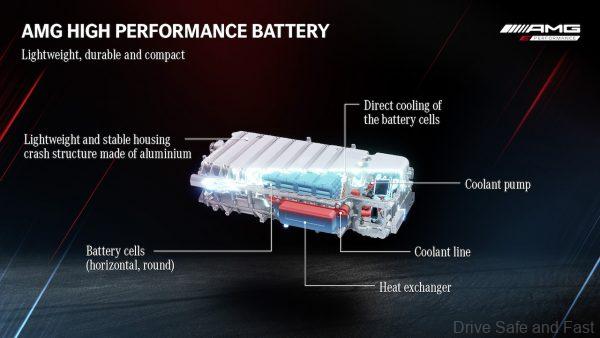
To cool this 400 volt battery, AMG designed an innovative direct cooling solution. 14-litres of a non-conductive liquid flows around all 560 cells to ensure optimum heat dissipation. The liquid flows through an oil/water heat exchanger that’s attached to the battery pack.
The batteries are kept around 45 degrees Celcius for best performance and longevity.
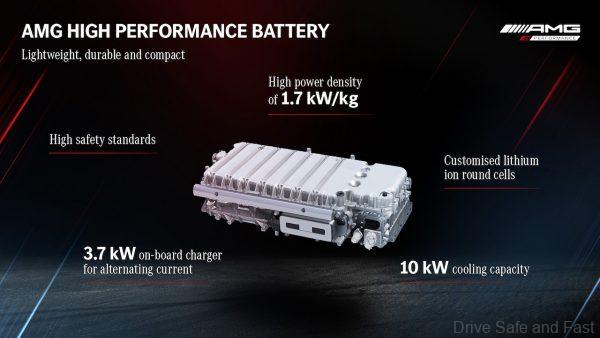
Energy recuperation for the batteries is user selectable in all Driving Modes save for ‘Slippery’ Mode. Here are the levels:
- Level 0: The vehicle behaves similarly to a conventional combustion engine with manual transmission, where the clutch is disengaged, and rolls on with the least resistance when the accelerator is released. The regeneration level is very low, and only serves to maintain the vehicle’s power supply. With the combustion engine switched off, friction losses in the drive train are reduced to a minimum.
- Level 1: This is the standard setting at which regeneration is already noticeable to the driver, and corresponds approximately to the deceleration of a conventional combustion engine whose clutch is engaged.
- Level 2: Stronger regeneration, the brake pedal hardly needs to be pushed when moving in traffic.
- Level 3: Maximum energy recovery, making so-called “one-pedal” driving possible as in an all-electric car. Depending on the driving status, more than 100 kW of power can be fed back into the battery.
- Special feature of the RACE driving mode: On the racetrack, the driver wants to squeeze the maximum time possible out of any braking action. In “RACE” driving mode, regeneration is automatically set at level 1 to allow the most reproducible vehicle behaviour possible at the limits.

Design highlights of the Mercedes-AMG GT 63 S E Performance
By now the Mercedes-AMG GT’s looks are familiar to most enthusiasts. Even the 4-door variant has become quite familiar looking. However, AMG have thrown some special design features in to help distinguish it from its petrol counterparts.
The front apron takes its design from the coupé variant of the AMG GT with wider outer air intakes angled towards the centre of the car.
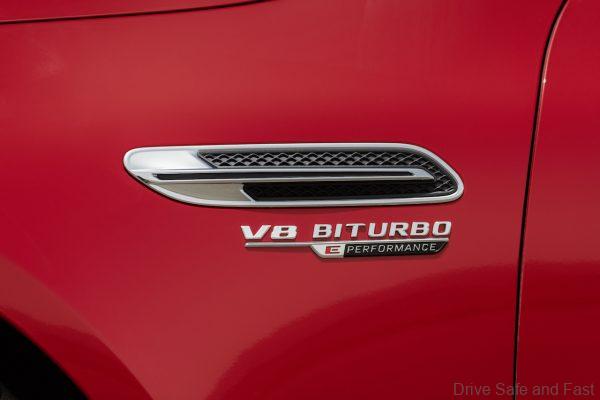
Exclusively available to this variant though are the rear apron with the integrated plug-in charger flap with the model designation in red. It also gets fluted trapezoidal twin exhaust tailpipes. “E PERFORMANCE” badges on the wings are also exclusive here.
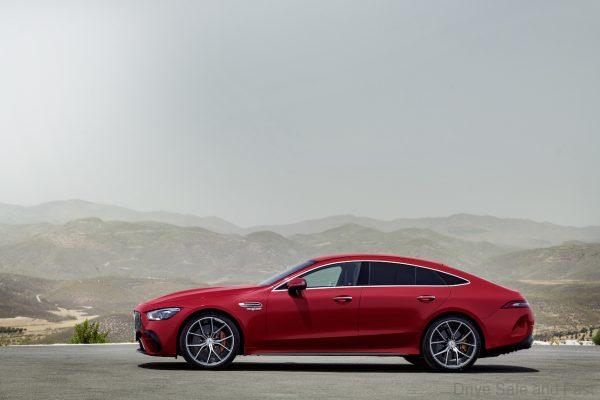
Inside, special hybrid displays have been setup on the car’s digital instrument cluster and infotainment system. These displays show electric range, power consumption, electric motor output, battery and motor temperatures, power flow and more.
Options
Four matt paint finishes, five metallic finishes and non-metallic finishes are available as well as 7 new customisable finishes. The AMG Night Package 2 or a combination of the Night and Carbon Packages can be optioned. 20 and 21 inch wheels in 2 colours are also availble.


